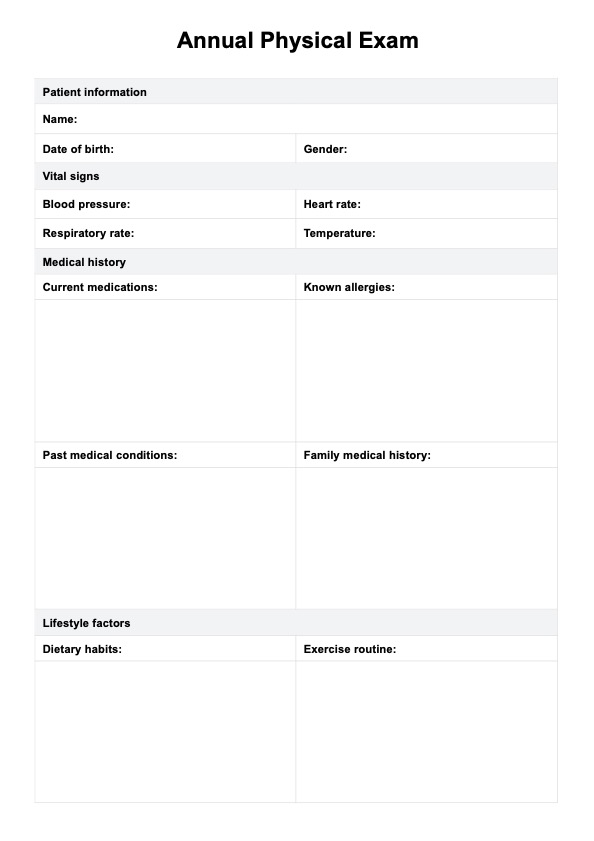As the name suggests, an Annual Physical Exam should be done once a year with your primary care provider. This comprehensive check-up includes measuring vital signs like blood pressure, reviewing your family history, and conducting a thorough physical examination.

Annual Physical Exam
Streamline your annual physical exams with our comprehensive Annual Physical Exam template. Download it today for efficient health assessments.
Annual Physical Exam Template
Commonly asked questions
The Annual Physical Exam is crucial for maintaining good health and detecting potential issues early. It allows your primary care provider to track changes in your health over time, update your medical records, and provide personalized preventive care recommendations. Regular annual exams can help identify risk factors for chronic diseases, ensure you're up-to-date on necessary screenings, and allow you to discuss health concerns with your healthcare provider.
When attending your Annual Physical Exam, bring a list of your current medications, including over-the-counter drugs and supplements. It's also helpful to record your family history, especially if there have been any recent changes or newly diagnosed conditions among close relatives. Lastly, prepare a list of any questions or health concerns you'd like to discuss with your primary care provider during the exam to make the most of your appointment.
EHR and practice management software
Get started for free
*No credit card required
Free
$0/usd
Unlimited clients
Telehealth
1GB of storage
Client portal text
Automated billing and online payments











